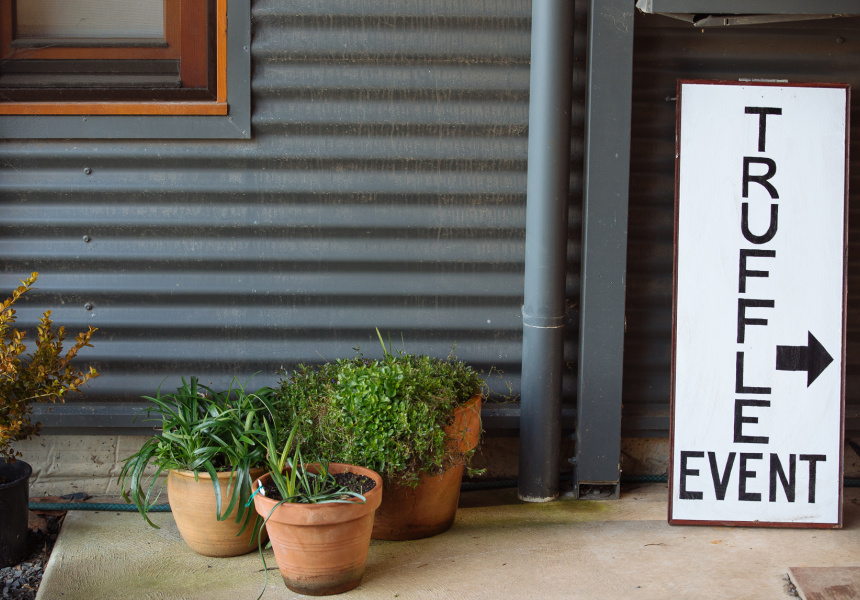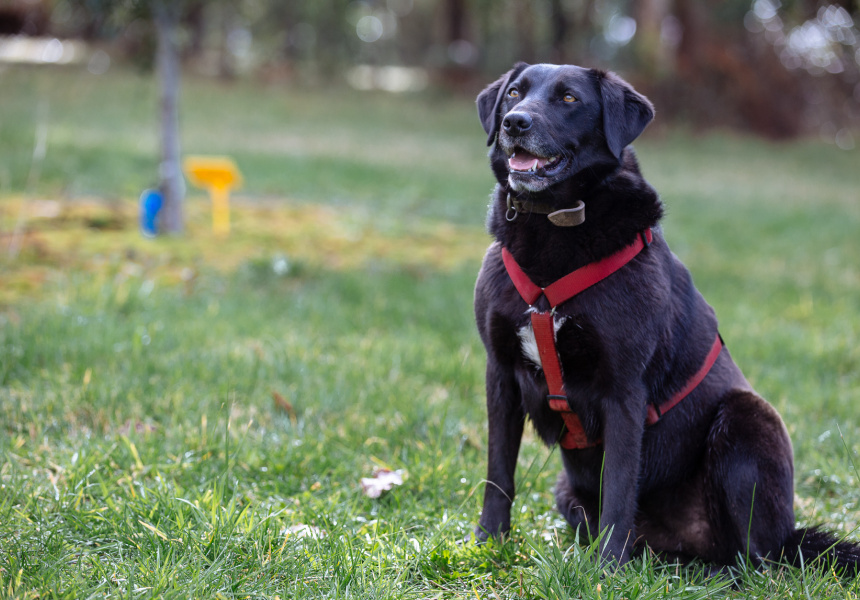Sally was a rescue dog. When Ian and Merilyn Woodhouse found her, the little labrador-cross was too terrified to eat. “Sally had clearly been very, very badly treated,” said Woodhouse. “The first time I went to feed her, she cowered and crept up to the bowl, and was clearly waiting to be kicked. They’d obviously used food to get her close enough to them so they could inflict whatever they wanted to on her.”
Things are very different these days. Sally not only has a loving home, she’s a respected expert in her field – and that field’s full of truffles. “I think she’s brilliant,” says Woodhouse.
Her employers at Oakhill Truffles got into the truffle business in 2004, when they sold their dairy farm in Glenormiston in Western Victoria. “We were retired farmers looking for another challenge,” says Woodhouse. “I knew I didn’t want to retire in the traditional sense – sit back and play bowls and get thoroughly bored. Retirement for me was a dirty word.”
We think you might like Access. For $12 a month, join our membership program to stay in the know.
SIGN UPBut cultivating truffles isn’t exactly a get-rich-quick scheme. After three years of clearing bracken, blackberries and barbed wire, and planting the truffle-inoculated oak saplings, it took the Woodhouses five years before their first fungus appeared. “We got our first harvest at year five, which is about as early as you can hope for,” he says. “We know people who have had trees in the ground for 14 or 15 years and haven’t yet had a truffle. We feel very sorry for them.”
The truffle is a famously difficult species to cultivate – which almost certainly contributes to its high value. Not only do the soil conditions have to be right, the mineral content needs to be perfect, as do pH levels. And, even if you can get the things to grow, it’s common for around half a crop to be eaten by insects. “We’re coming to grips with that,” sighs Woodhouse.
The truffle itself lives in the root system of the oak trees, and sends up a fungal bloom as the winter approaches. “The truffle, smaller than a pinhead, launches itself off the roots in December,” says Woodhouse. “As long as a passing slug doesn’t make a snack of it, it’ll grow from then to June, July or August.”
To identify a ripening mushroom, Woodhouse heads out into the truffière (truffle field) with Sally, who gleefully sniffs about until she finds one. Then, Woodhouse gets down on the ground, digs about with a butter knife – and sniffs. “There’ll be almost no aroma until about ten days before it’s actually ripe,” he explains. “Your dog might identify a truffle, but you don’t necessarily dig it up. You wait until you can smell it and it’s ready to go.”
Pigs are equally adept at finding truffles, though their motives are less innocent than Sally’s. “It’s the pheromone that the female pig is interested in. They think there’s a male pig there,” says Woodhouse. “But they also like the taste.”
Woodhouse considered a truffle pig, but ultimately decided against it. “We did think about it. But pigs grow to be very big animals,” he says. “It’s very difficult to hold back a 200-kilogram pig from eating your truffles.”
And anyway, black labrador-crosses do just as good a job. Teaching Sally to find stinky black gold was, apparently, pretty straightforward. Once Woodhouse got the dog’s confidence, which took a couple of months, he started the training program. He and Merilyn would introduce a smell, then give her a treat. Later, they’d hide truffle baits and reward her once she’d found them. In four months, she was ready to truffle. But, there’s a secret to Sally’s skills. “She likes cabana,” laughs Woodhouse. “It didn’t take her long. She’s not stupid.”
Oakhill Truffles hosts regular truffle hunts at its truffière in Gordon, about an hour outside of Melbourne. Visit oakhilltruffles.com.au for information.



